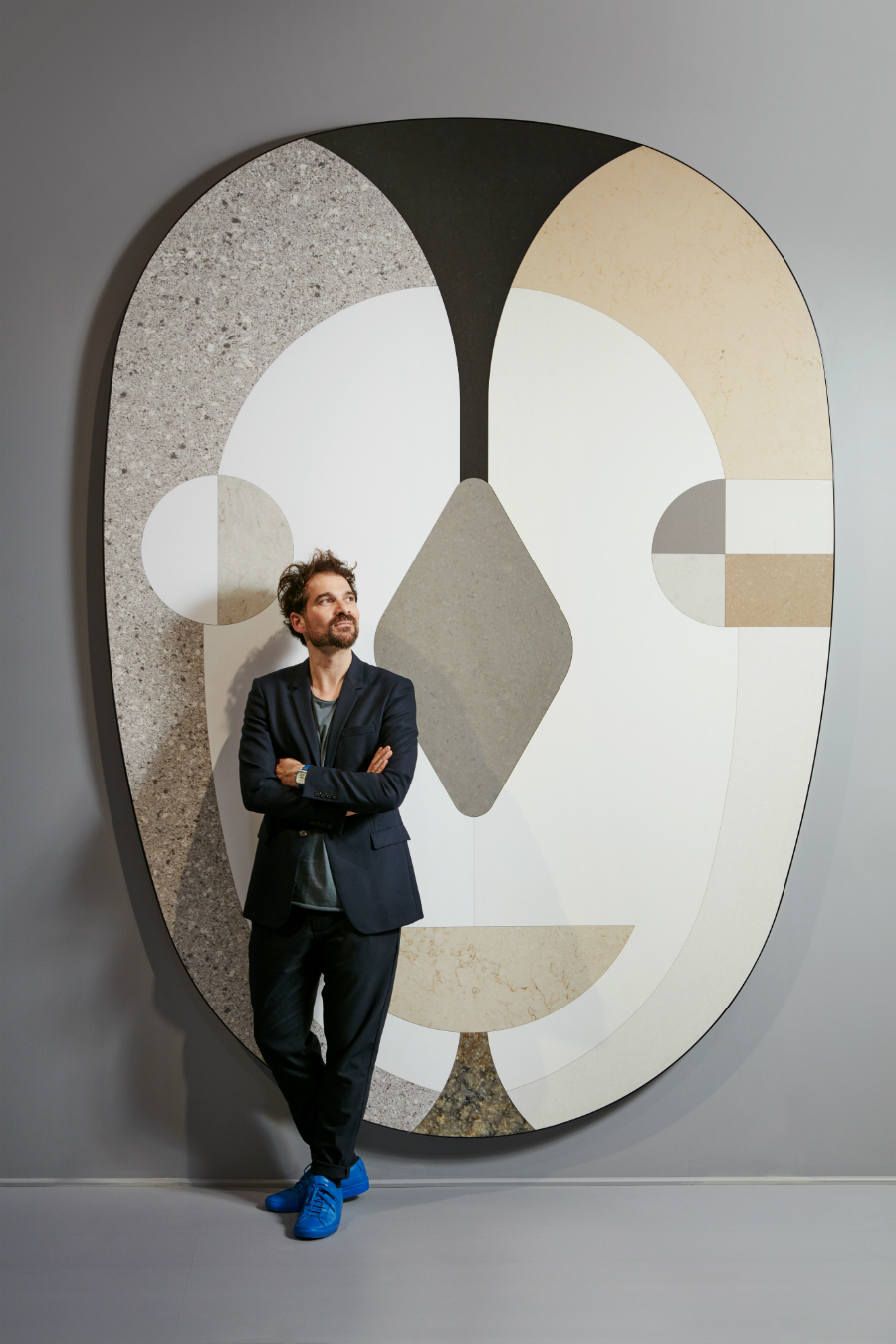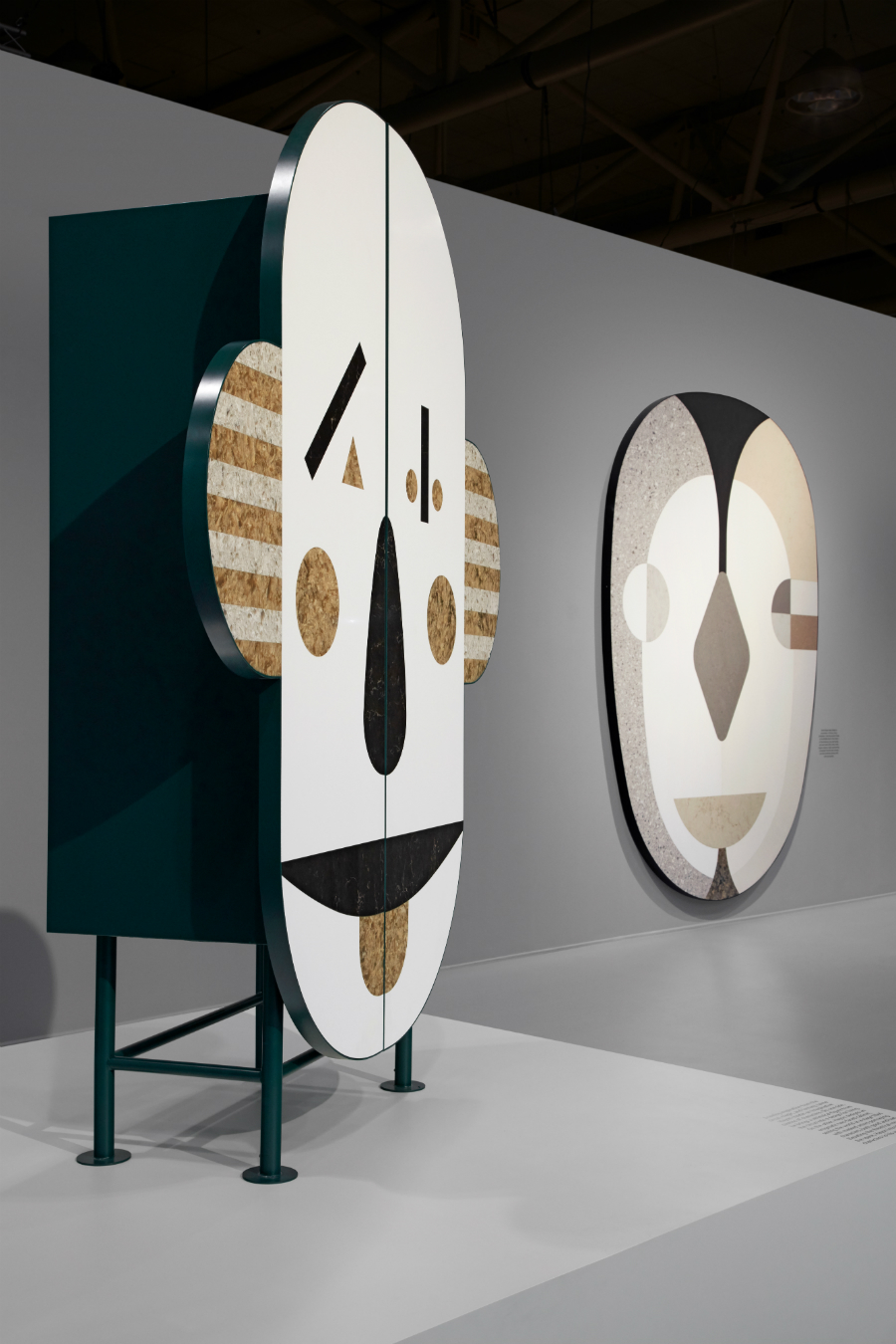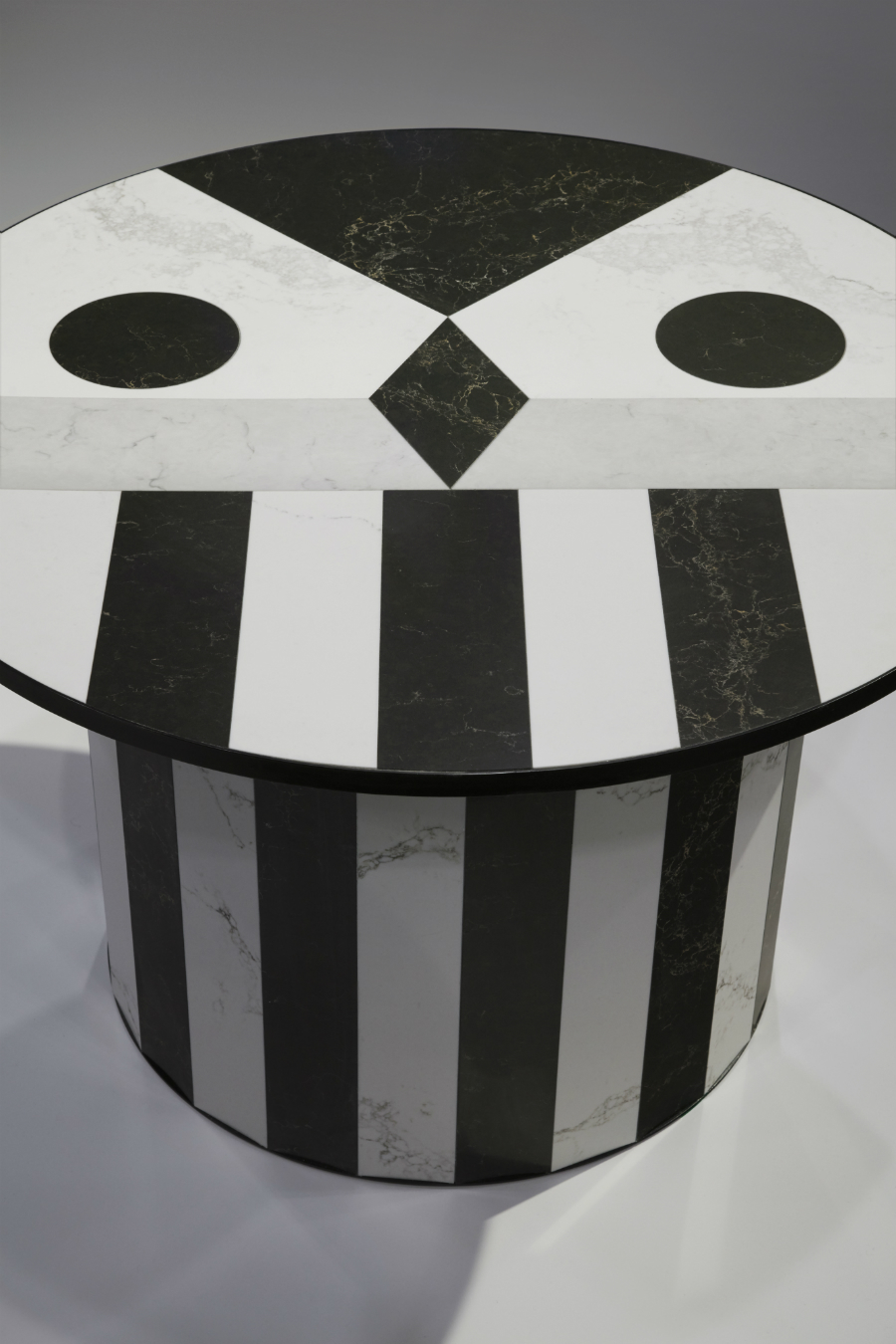Jaime Hayon of Spain‘s Hayon Studio is everywhere. Just a couple of days before arriving at Toronto’s Interior Design Show (IDS), he was in Cologne launching his line of furniture for Wittmann. And as he was putting finishing touches on his Caesarstone IDS collaboration in Toronto, his team was at Maison et Objet in Paris presenting his first collection of porcelain homeware for Vista Alegre. Oh, and Barceló Torre de Madrid, a hotel he designed, also opened that week. No, Hayon does not possess supernatural powers that can disrupt the space and time continuum—it’s simply the magic of the designer’s endless energy and enthusiasm for his work. In signature Hayon fashion, the Caesarstone installation, titled Stone Age Folk, borrows from folklore, ranging from Hungarian myths to African influences, resulting in mask-shaped designs that challenge the use of the rigid materials such as quartz. This was only a glimpse of the bigger picture, to be revealed during Milan Design Week in April.
Where did the idea for Stone Age Folk come from?
I was trying to play with the idea of stone, obviously going back to a primitive way of looking at the material. I thought it was interesting to play with the word “folk” because folklore to me is a very important inspiration. It’s the idea of using cultures, patterns, graphical elements that are part of different folklores that inspire me.
You always have your special characters.
I see characters coming back in different ways. There’s a mask that’s looking over everything; the mask that responds to the message of every civilization. When there’s the world behind, there’s a mask behind. So certain shapes and characters come back in different ways in my work. Sometimes they become crystal made in France, and sometimes they become part of a big installation in a big museum, at times they become something else.
Your work is unique, very you, even in the collection you did that was a tribute to Le Corbusier. He has to some extent inspired your work. Have there been any other designers that you carefully studied?
Always. I loved the work of [Josef] Hoffmann, and Vienna [Secession], which is fantastic. I obviously loved Le Corbusier.
He was sort of whimsical, too.
It’s also the character I reflect with because I’m a painter and I do design. I even decided to do architecture, I do interiors, and I do a lot of artwork. I work at institutions, but also with clients. So, I always felt that these kinds of characters, such as Le Corbusier, or other designers, or artists, or architects, are sort of playing with the background of different applications of their work. I feel very related because I don’t believe in one category of things. I do believe that you have a set of extensions of things. I was always inspired by people who are able to go for big things and small things.
How do you approach designing a small thing versus a large thing?
In the same way. If I’m doing a watch, it needs to be a watch that has something that clicks. It’s micro design. But if I’m doing a hotel, there needs to be an atmosphere, there’s the music, there are senses. If your concepts are clear in your mind, you can put what you’re up to in one sentence.
Where do you come up with all of these ideas?
I woke up this morning at six, and I started to draw things. I just have it in me. I get a lot of calls from people that ask to collaborate with me. I’ve been lucky in that way. I’m never imposing myself [on others]. And this helps me to make what I make, because it’s so natural. And if you do something natural, then it works really well.
So what’s next for you?
A lot of things. This year is going to be busy, but I never think about the next, I think about the now. This is what’s really important. It makes me enjoy what I’m doing, and I learn by doing things. So the learning process of going deep into experimenting more and more, and trying to find your own path, and now being very comfortable with the way I work, the people I work with, and the place I live, makes me think that the future is going to be very interesting. Because I don’t have to prove anything anymore.
I think you’ve done that.
No, believe it or not, I meet people that always have a new challenge for you. Some people call me and say, “Hey, have you ever made a boat?” And I’m like, “Huh? I’ve never made a boat; would you like to order one?”
This interview has been edited and condensed.
Be inspired—read more from our Design section.













